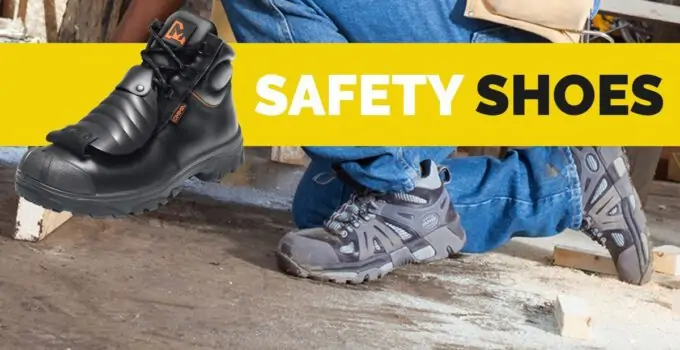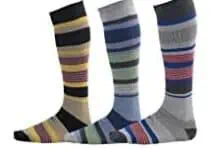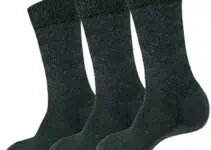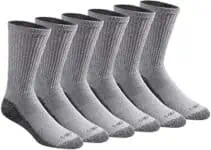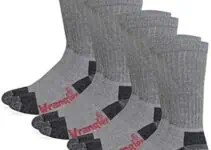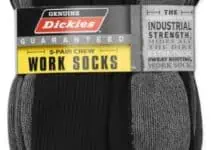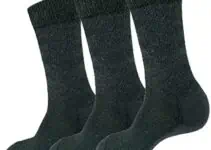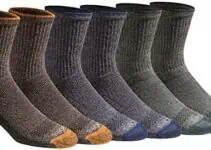The common point of the safety boot and the safety rangers is the fact that their stem goes up very high on the calf. Beyond this common point, these two types of safety shoes have some differences. In this article, we will analyze the advantages and disadvantages of each solution.
The advantages of safety boots
The first advantage of safety boots is that they have very good resistance to humidity. Compared to the safety Rangers, they do not have lace and therefore no tongue. This is an advantage regarding water resistance because there is no entry point for water.
However, this point must be qualified because most safety rangers have tongues equipped with a gusset. The gusset is the link between the tongue and the stem. It allows blocking the entry of dust and moisture.

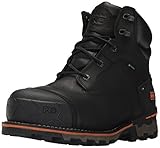






Whether for boots or rangers, water resistance is also provided by the material of the upper which is often waterproof leather. The full leather character of the boot will however once again better secure the person against moisture.
We can also add elements of protection against moisture such as a waterproof-breathable membrane. This last one can also be proposed on a safety Ranger.
To have completely waterproof boots, you should go for PVC or polyurethane boots. A leather boot slows down water penetration but is not waterproof. The only boots that do not allow water to penetrate completely are plastic boots with S4 or S5 standards.
The main difference between boots and rangers is the presence or absence of laces. For outdoor activities, the laces are often a point of fragility. They get wet and tend to get soaked with dirt, oil or other encrusting materials.
They eventually become brittle and break. In the case of projections of materials that can abrade the laces (welding sparks, molten metals, etc.) a lace-up shoe will be too fragile. The safety boot can therefore be an adequate solution.
It is important to take into account that the lace is a part of wear and tear, a bit like the valve train of a car.
The first advantage of the boot is therefore better resistance to water, especially for plastic boots which are simply the only “waterproof” alternative.
The second advantage is the elimination of the fragility of the lace.
Amazon deals
The advantages of safety Rangers
The placelessness of the boot is an advantage for the resistance but it is a disadvantage for the adjustment of the footwear. The main advantage of the Rangers is that you can loosen the lacing to get your foot through and then tighten the lace to adjust the fit from instep to calf through the ankle.
This is a major advantage over the boot in terms of comfort. Because if it is difficult to find the right shoe, it is even more complicated to find the right boot.
And for good reason, with a boot that is too tight, the person will not even be able to get his foot through. Conversely, a boot that is too open at the instep will result in a foot that is not well supported when walking, with the risk of causing a lack of stability and blisters.
The Rangers allow a better adjustment of the footwear and therefore better support of the ankle. This is another advantage for those who walk on winding floors or are littered with objects. The Rangers provide the best ankle support, whereas in a boot the support is very weak.
Safety Rangers
Concerning the resistance to moisture, the Rangers can also be equipped with water-repellent leather and a waterproof-breathable membrane as well as a gusset. Note that for the gusset and tongue, if you work in very humid places, favor waterproof materials such as PU and not canvas. In any case for the lower part.
What is the best alternative for outdoor winter work?
Both Rangers and leather boots are suitable for winter work. At S.24, it should be noted that our safety boots are equipped with a Thinsulate lining that stores body heat.
This combined with the membrane provides good protection against the cold. Indeed, by slowing down the penetration of water, the membrane avoids the cold generated by humidity: wet feet are always more complicated to warm up.
That said, by providing better support, the Safety Rangers can allow greater agility on muddy or rocky ground.
To have the protection of a boot with the comfort of the rangers, the idea could be to associate the Rangers with a gaiter that would protect the laces from projections, dust or liquid entry.
CI Safety Shoes: What Does the CI Standard Mean? Explanations!
The CI standard allows you to recognize at a glance that a safety shoe has been designed to offer protection against the cold.
In fact, it is an additional protection of the standard for safety shoes. This additional, non-mandatory requirement (there are others), provides additional protection to the wearer according to the specific risks to which he or she is exposed. In this case, the occupational risk is the cold.
How is CI safety footwear certified? The CI standard test
To obtain the CI standard, a safety shoe or sneaker must pass a specific test.
This test is performed on the entire shoe. In fact, sometimes only a sample of a safety shoe is tested. This is not the case here.
The test of a CI safety shoe is carried out as follows:
- the shoe is filled with stainless steel balls
- then the shoe is placed in a cold box which is placed on a copper plate
- the top of the shoe is then sealed with polymer foam
- then the inside of the shoe is made to be at a temperature of 23°C
- then the cold box is set at -17°C for 30 minutes
After this time, the temperature is measured again in the shoe. To pass the test, the temperature inside the shoe must not have dropped more than 10°C.
Depending on the results of the test, the safety shoe will either pass or fail the CI certification.
Thus, if the test is passed, a CI safety shoe offers insulation against the cold. But this insulation only concerns the sole and not the entire shoe.
Indeed, the CI standard means that the sole provides insulation against the cold. At a temperature of -17°C, the temperature inside the shoe cannot drop more than 10°C in 30 minutes.
The insulation of the sole therefore prevents the shoe from cooling down too much. It prevents the cold from rising up through the ground.
Why wear CI safety shoes?
CI safety shoes can be very interesting for several work environments. Anti-cold safety shoes are ideal for working in cold environments such as cold rooms, food processing industries, refrigerated trucks).
They are particularly suitable for protecting cold floors. It can also be a real asset for professionals who work outside in winter (building site, green spaces…), especially during periods of frost or snow.

